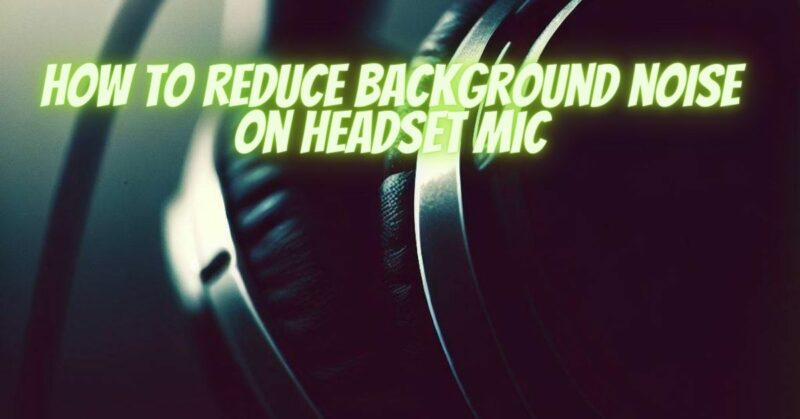Background noise can be a common issue when using a headset microphone for communication purposes, such as gaming, video conferencing, or recording voiceovers. The presence of unwanted noise can disrupt clear communication and diminish the overall audio quality. Fortunately, there are effective techniques to minimize background noise and improve the sound capture on a headset microphone. In this article, we will explore practical tips to reduce background noise on a headset mic, ensuring a clearer and more immersive audio experience.
- Choose a Quiet Environment:
a. Find a quiet room: Select a quiet space with minimal external noise sources. Avoid areas near appliances, windows, or high-traffic zones to minimize background noise that could be picked up by the microphone.
b. Close doors and windows: Reduce external noise by closing doors and windows to create a quieter environment for recording or communication.
- Position the Microphone Correctly:
a. Adjust the microphone boom: Position the microphone boom closer to your mouth to capture your voice more effectively and reduce the pickup of ambient noise. Avoid placing it too far away, as it may result in a weaker signal and more background noise.
b. Maintain consistent microphone placement: Keep the microphone at a consistent distance from your mouth throughout your communication or recording session to ensure consistent sound quality.
- Use a Pop Filter or Windscreen:
a. Pop filter: Attach a pop filter or foam cover to the headset microphone. This accessory helps reduce plosive sounds and minimizes the impact of air blasts, such as “p” and “b” sounds, which can cause unwanted noise.
b. Windscreen: When using the headset microphone in windy environments or situations where air movement is present, consider using a windscreen to reduce wind noise and minimize distractions.
- Adjust Microphone Sensitivity and Volume:
a. Adjust microphone sensitivity: In your computer’s audio settings or software, adjust the microphone sensitivity to an optimal level. Lowering the sensitivity can help reduce background noise, but be mindful not to set it too low, as it may affect the clarity of your voice.
b. Control headset volume: Adjust the headset volume to an appropriate level. Avoid setting it too high, as it may introduce distortion or amplify background noise.
- Use Noise Suppression Software:
a. Enable noise suppression features: Some communication software and applications offer noise suppression or noise reduction features. Explore the settings of your software and enable these features to help reduce background noise during your communication sessions.
- Minimize External Noise Sources:
a. Mute or distance yourself from noisy devices: Turn off or mute nearby electronic devices, such as fans, air conditioners, or loud computer fans, to prevent them from being picked up by the microphone. Additionally, move away from sources of background noise to minimize their impact.
- Experiment with Different Headset Positions:
a. Find the optimal positioning: Adjust the position of the headset on your head and the microphone boom to find the most effective placement for reducing background noise. Experiment with different angles and positions to achieve the best results.
Conclusion:
Reducing background noise on a headset microphone is essential for clear and uninterrupted communication during gaming, video conferencing, or voiceovers. By choosing a quiet environment, positioning the microphone correctly, using accessories like pop filters and windscreens, adjusting microphone sensitivity and volume, utilizing noise suppression software, minimizing external noise sources, and experimenting with different headset positions, you can significantly reduce background noise and enhance the audio quality. Apply these tips to ensure a more immersive and focused audio experience during your headset microphone usage.

